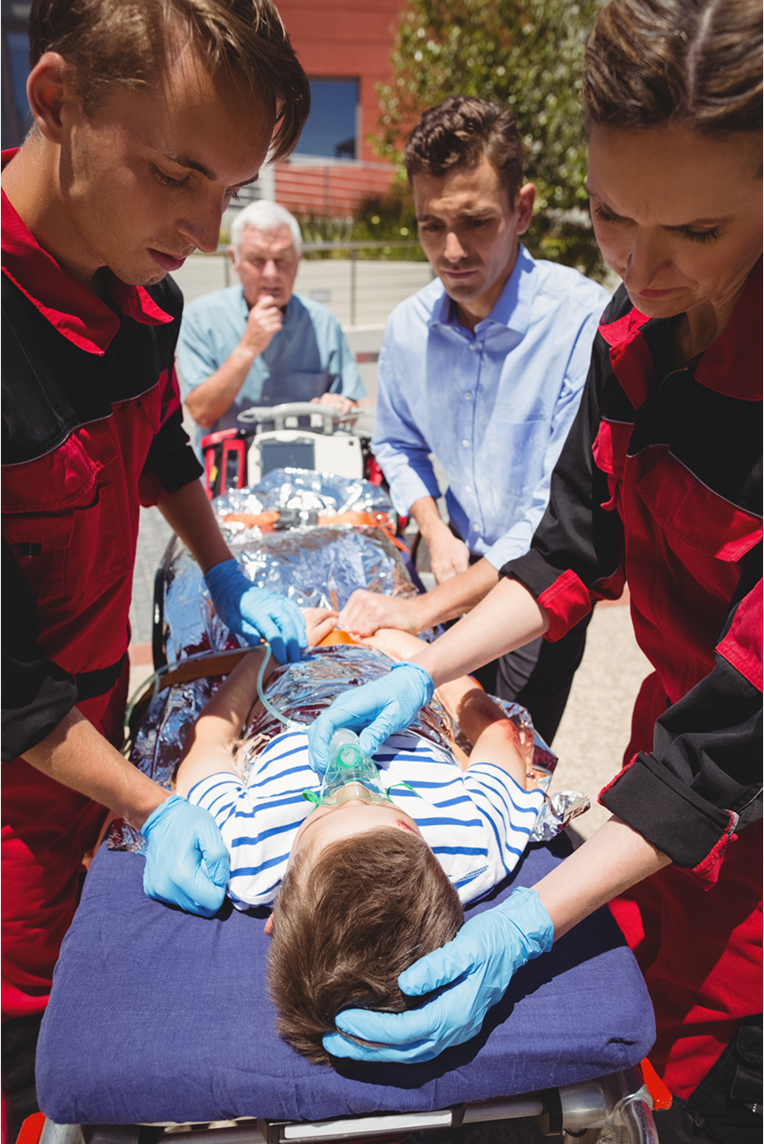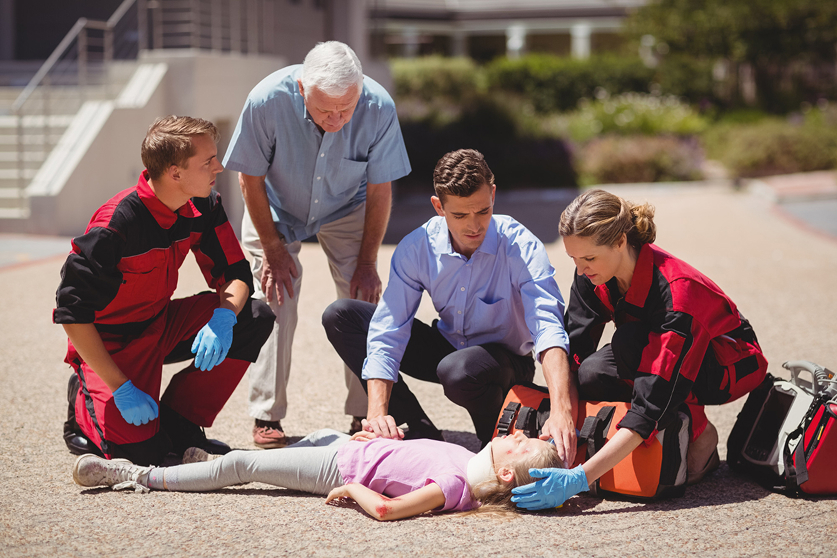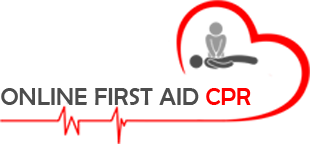- +1 (909)-728-2512
- info@onlinefirstaidcpr.com
- Greater Los Angles, CA
CPR (Cardiopulmonary Resuscitation)
A victim suffering from cardiac arrest is not getting enough oxygen carried to the brain and other vital organs. CPR is a combination of rescue breaths and external chest compressions to deliver oxygen to the brain to keep it alive.
Rescue breaths deliver oxygen to the lungs. Chest compressions squeeze the heart and circulate the blood from the heart to the lungs to get oxygen. The heart refills with blood between each compression. Continuous compressions deliver oxygen all over the body. High-quality chest compressions are the most vital process of CPR.
CPR Barriers
- The risk of getting contaminated while providing rescue breaths is very low. However, many people are not comfortable with providing mouth-to-mouth rescue breaths. CPR barriers can prevent exposure to the blood or body fluids of a victim.
- A face mask comes with a filtered valve that lets air to enter but prevents the backflow of the fluids. Pick the right size mask to form a seal and provide effective rescue breaths. Apply the mask with the narrow end, on the nose bridge. Firmly press the mask to the victim‘s face and raise the chin to open the airway.
- A face shield has a built-in fitter or one-way valve. Position the shield with the filter or valve over the victim's mouth. Pinch the nose to provide rescue breaths.

AED Use
AED stands for Automatic External Defibrillator, which is a computerized device that can examine a victim‘s heart rhythm, and accordingly deliver an electrical shock to restore a heartbeat. AED provides directions via visual indicators and voice prompts. The device is quite safe and simple to use.
It is very important that no one is touching the victim or his/her clothing while the AED analyzes or delivers a shock.
When the AED prompts to deliver a shock:
- Immediately observe the victim entirely to make sure no one is touching him/her and loudly shout ―”Clear!”
- Push the shock button.
Continue chest compressions after the AED delivers a shock, or even if no shock is recommended. After every 2 minutes, the AED will prompt you to halt the CPR process so that it can examine the heart rhythm. When prompted to stop CPR, switch roles every 2 minutes if another trained rescuer is available.
First Aid
Providing care during an emergency can have an emotional, mental, as well as physical impact on the rescuer. It‘s normal to feel unease after an incident. Sometimes such feeling can last for weeks or even months, and can adversely affect a rescuer‘s family life and health.
First Aid Kits: A first aid kit needs to be designed according to its location and the requirements of the user. Check and restock the first aid kits regularly. The most frequently used item can run out quickly, and most of these items come with expiration dates. Secure a first aid kit at work, at home, and in the car when traveling.

